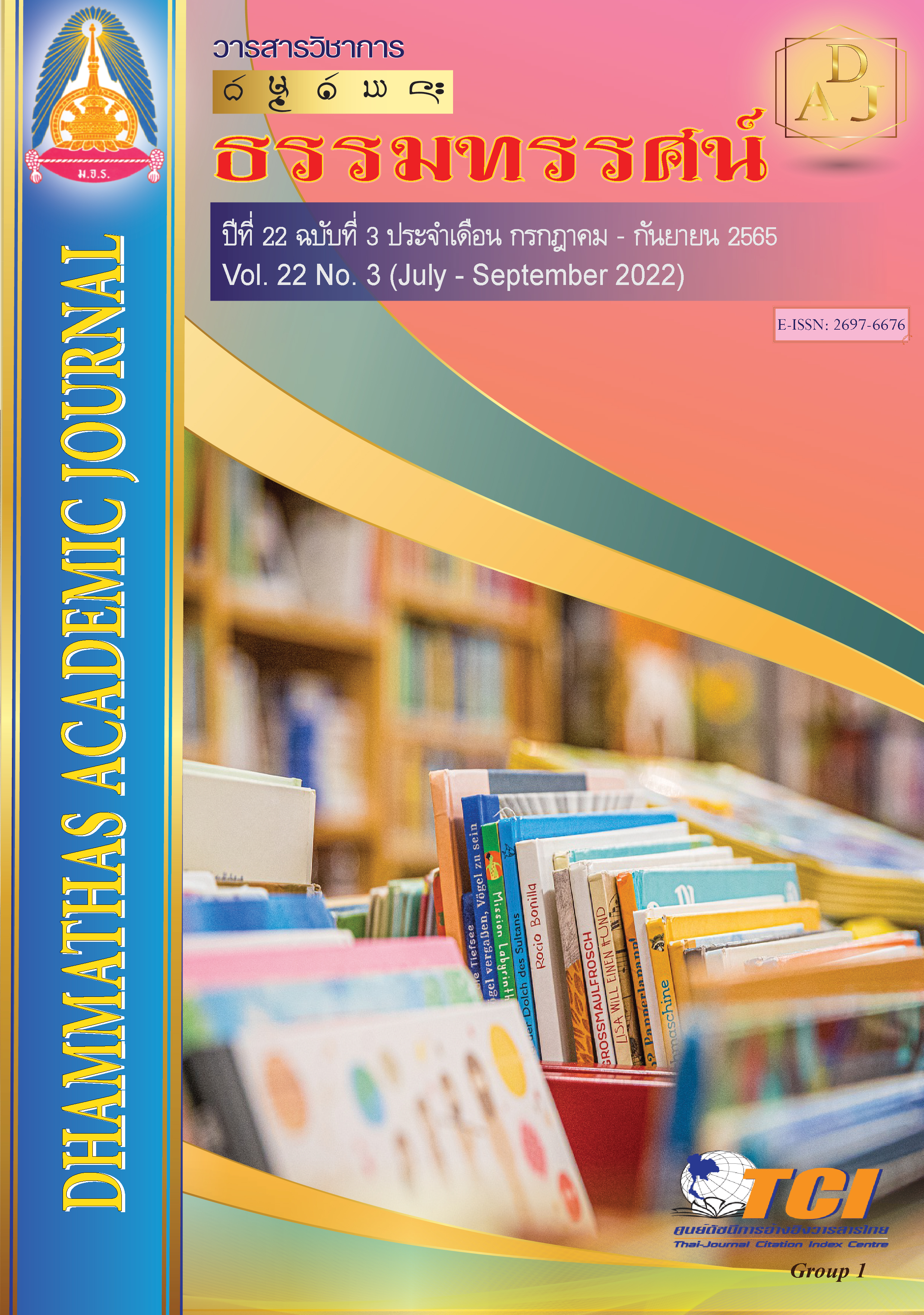Creative Tourism Model Based on Cultural Capital Tai Dam Case Study Ban Na Pa Nard, Loei Province
Main Article Content
Abstract
This research was aimed to study the community context and spatial cultural capital to develop and evaluate the creative tourism model based on cultural capital toward a case study of Tai Dam of Ban Na Pa Nard, Loei Province. Mixed-method research methodology was implemented and the qualitative data was collected using focus group discussions through interviews and small group discussions. The quantitative data was collected with questionnaires to evaluate the appropriateness, and the data was analyzed by Content Analysis, Mean, and Standard deviation.
The results revealed that:
1. For the context of Ban Na Pa Nard community, the villagers are Tai Dam people who maintain their distinctive, hold on the belief about ancestors, and still have the same way of life which has been modified to fit well with today’s society. Their outstanding cultural capital included the traditions, rituals, beliefs, identity, and the way of life of Tai Dam people. The target group which are related to the Tai Dam community: (1) people living in Ban Na Pa Nad and are of Tai Dam descent and is related to tourism in Ban Na Pa Nad with a body of knowledge that can be transmitted in culture The life of the Tai Dam people Recognized by the villagers of paddy fields and experts involved in creative tourism.
2. The creative tourism model was developed by beginning with considering the cultural capital according to the basic criteria that creative tourism activities need creative design based on 10 Criteria for developing creative tourism activities, applying the activities selected for tourists to try doing, and assessing the tourists’ satisfaction in order to take suggestions for the improvement.
3. According to the appropriateness of the model evaluated by 9 qualified specialists, the overall appropriateness was at the highest level ( = 4.53). The implementation of creative tourism activities designed for tourists to do / tourist satisfaction was evaluated the highest, and at the most appropriate (
= 4.67), followed by consideration of cultural capital based on prerequisite criteria / design of cultural capital-based creative tourism activities, as the second highest, which was the most appropriate (
= 4.60), and the appropriateness of cultural capital search, the third highest, which was the most appropriate (
= 4.22).
Article Details

This work is licensed under a Creative Commons Attribution-NonCommercial-NoDerivatives 4.0 International License.
เพื่อให้เป็นไปตามกฎหมายลิขสิทธิ์ ผู้นิพนธ์ทุกท่านต้องลงลายมือชื่อในแบบฟอร์มใบมอบลิขสิทธิ์บทความ ให้แก่วารสารฯ พร้อมกับบทความต้นฉบับที่ได้แก้ไขครั้งสุดท้าย นอกจากนี้ ผู้นิพนธ์ทุกท่านต้องยืนยันว่าบทความ ต้นฉบับที่ส่งมาตีพิมพ์นั้น ได้ส่งมาตีพิมพ์เฉพาะในวารสาร วิชาการธรรม ทรรศน์ เพียงแห่งเดียวเท่านั้น หากมีการใช้ ภาพหรือตารางของผู้นิพนธ์อื่นที่ปรากฏในสิ่งตีพิมพ์อื่นมาแล้ว ผู้นิพนธ์ต้องขออนุญาตเจ้าของลิขสิทธิ์ก่อน พร้อมทั้ง แสดงหนังสือที่ได้รับการยินยอมต่อบรรณาธิการ ก่อนที่บทความจะได้รับการตีพิมพ์References
เพชรตะบอง ไพศูนย์. (2563). ประวัติไทดำ บ้านนาป่าหนาด ตำบลเขาแก้ว อำเภอเชียงคาน จังหวัดเลย. เลย: ม.ป.พ.
ระพีพัฒน์ เกษโกศล. (2557). การจัดการท่องเที่ยววิถีถิ่น ชุมชนเกาะศาลเจ้าและพื้นที่เกี่ยวเนื่อง เขตตลิ่งชัน กรุงเทพมหานคร. (วิทยานิพนธ์ศิลปศาสตรมหาบัณฑิต). กรุงเทพฯ: มหาวิทยาลัยศิลปากร.
ศิริวรรณ เสรีรัตน์ และคณะ. (2549). การวิจัยการตลาด. กรุงเทพฯ: ธรรมสาร.
สำนักงานวัฒนธรรมจังหวัดเลย. (2556). องค์ความรู้ทางวัฒนธรรม. เข้าถึงได้จาก https://www.mculture.go.th/loei/ewt_news.phpnid=110&filename=index
สุดแดน วิสุทธิลักษณ์ และคณะ. (2556). การท่องเที่ยว (Tourism) และนักท่องเที่ยว (Tourist): ความหมายและความสำคัญในการท่องเที่ยวเชิงสร้างสรรค์. กรุงเทพฯ: องค์การบริหารการพัฒนาพื้นที่พิเศษเพื่อการท่องเที่ยวอย่างยั่งยืน.
_______. (2556). การท่องเที่ยวเชิงสร้างสรรค์ (Creative Tourism). กรุงเทพฯ: องค์การบริหารการพัฒนาพื้นที่พิเศษเพื่อการท่องเที่ยวอย่างยั่งยืน (องค์การมหาชน).
องค์การบริหารการพัฒนาพื้นที่พิเศษเพื่อการท่องเที่ยวอย่างยั่งยืน. (2562). คู่มือกระบวนการพัฒนาและยกระดับกิจกรรมท่องเที่ยวเชิงสร้างสรรค์. กรุงเทพฯ: บุ๊คพลัส พับลิชชิ่ง.
Cronbach, L. J. (1951). Coefficient alpha and the internal structure of tests. Psychometrika, 16(3), 297-334.
Ohridska-Olson, R., & Ivanov, S. (2010). Creative Tourism Business Model and its Application in Bulgaria. Retrieved from https://www.researchgate.net/publication/228257477_ Creative_Tourism_Business_Model_and_its_Application_in_Bulgaria
Topdeck Travel. (2016). Are Millennial Travel Trends Shifting in 2016?. Retrieved from https://www.forbes.com/sites/lealane/2016/01/15/are-millennial-travel-trends-shifting-in-2016-youll-be-surprised/?sh=6cd5736536a8
World Bank. (2019). Annual Report, The World Bank Annual Report 2019: Ending Poverty, Investing in Opportunity. Retrieved from https://openknowledge.worldbank.org/handle/10986/32333

